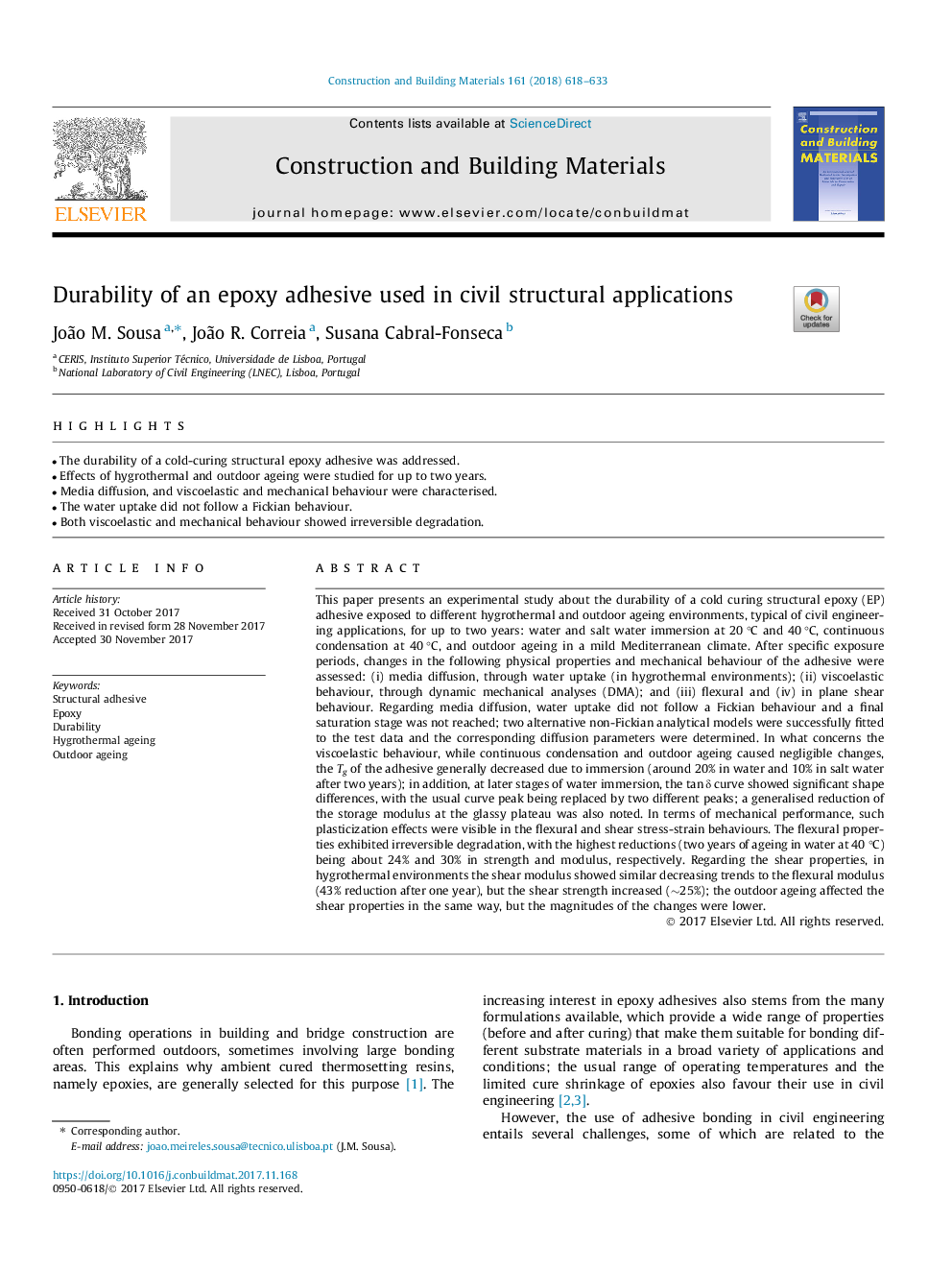| کد مقاله | کد نشریه | سال انتشار | مقاله انگلیسی | نسخه تمام متن |
|---|---|---|---|---|
| 6716888 | 1428745 | 2018 | 16 صفحه PDF | دانلود رایگان |
عنوان انگلیسی مقاله ISI
Durability of an epoxy adhesive used in civil structural applications
ترجمه فارسی عنوان
دوام چسب اپوکسی مورد استفاده در برنامه های ساختمانی مدنی
دانلود مقاله + سفارش ترجمه
دانلود مقاله ISI انگلیسی
رایگان برای ایرانیان
کلمات کلیدی
چسب ساختاری، اپوکسی، طول عمر پیری گرمازا، پیری در فضای باز،
موضوعات مرتبط
مهندسی و علوم پایه
سایر رشته های مهندسی
مهندسی عمران و سازه
چکیده انگلیسی
This paper presents an experimental study about the durability of a cold curing structural epoxy (EP) adhesive exposed to different hygrothermal and outdoor ageing environments, typical of civil engineering applications, for up to two years: water and salt water immersion at 20â¯Â°C and 40â¯Â°C, continuous condensation at 40â¯Â°C, and outdoor ageing in a mild Mediterranean climate. After specific exposure periods, changes in the following physical properties and mechanical behaviour of the adhesive were assessed: (i) media diffusion, through water uptake (in hygrothermal environments); (ii) viscoelastic behaviour, through dynamic mechanical analyses (DMA); and (iii) flexural and (iv) in plane shear behaviour. Regarding media diffusion, water uptake did not follow a Fickian behaviour and a final saturation stage was not reached; two alternative non-Fickian analytical models were successfully fitted to the test data and the corresponding diffusion parameters were determined. In what concerns the viscoelastic behaviour, while continuous condensation and outdoor ageing caused negligible changes, the Tg of the adhesive generally decreased due to immersion (around 20% in water and 10% in salt water after two years); in addition, at later stages of water immersion, the tan δ curve showed significant shape differences, with the usual curve peak being replaced by two different peaks; a generalised reduction of the storage modulus at the glassy plateau was also noted. In terms of mechanical performance, such plasticization effects were visible in the flexural and shear stress-strain behaviours. The flexural properties exhibited irreversible degradation, with the highest reductions (two years of ageing in water at 40â¯Â°C) being about 24% and 30% in strength and modulus, respectively. Regarding the shear properties, in hygrothermal environments the shear modulus showed similar decreasing trends to the flexural modulus (43% reduction after one year), but the shear strength increased (â¼25%); the outdoor ageing affected the shear properties in the same way, but the magnitudes of the changes were lower.
ناشر
Database: Elsevier - ScienceDirect (ساینس دایرکت)
Journal: Construction and Building Materials - Volume 161, 10 February 2018, Pages 618-633
Journal: Construction and Building Materials - Volume 161, 10 February 2018, Pages 618-633
نویسندگان
João M. Sousa, João R. Correia, Susana Cabral-Fonseca,
